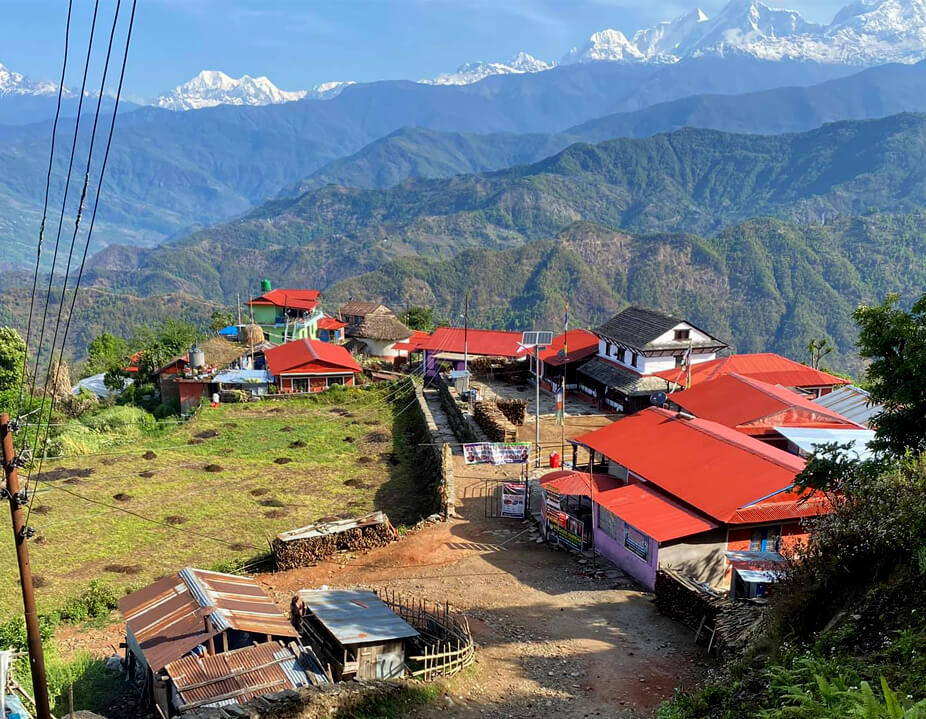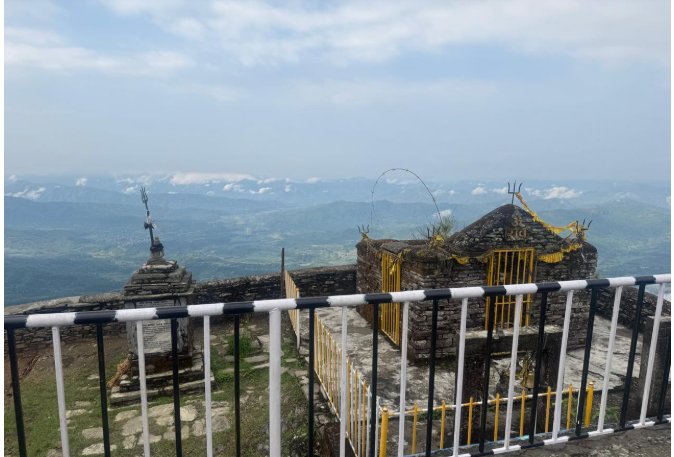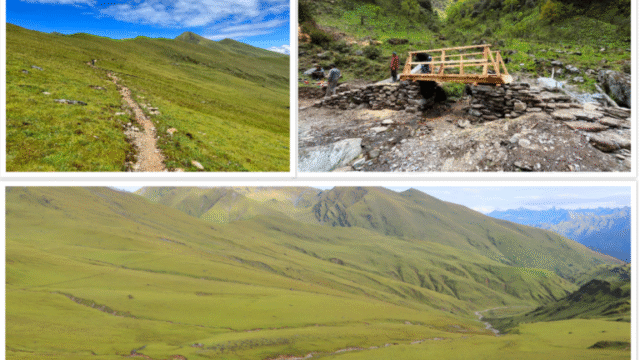Nestled in the serene hills of Rainas Municipality-9 in East Lamjung, Rainaskot is fast becoming a significant center of attraction for both domestic and international tourists. Once devastated by the 2015 earthquake, this historic Gurung village has made a remarkable comeback through reconstruction and the introduction of a community-based homestay system, drawing visitors eager to experience its natural beauty, cultural richness, and warm hospitality.
Rising Tourist Influx
Following the post-earthquake reconstruction of Rainaskot’s traditional Gurung houses into homestay accommodations, a growing number of tourists have started to frequent the area. Visitors are greeted with stunning panoramic views of more than a dozen Himalayan ranges, including Annapurna, Ganesh, Manaslu, Lamjung, and Machhapuchhre from the Rainaskot hilltop, located slightly above the homestay cluster.
One such visitor, Dr. Jyoti Prasad Gajurel from Kathmandu, shared his joy, stating, “The hospitality, the historical essence of Rainaskot, and its natural charm have provided me with great satisfaction.” He believes that the pleasant weather and scenic landscapes are key reasons for the rising tourist numbers.
Sweeping Views and Cultural Heritage
From the hilltop, tourists can easily spot villages and landmarks in Gorkha such as Barpak, Laprak, Bhachchek, Palungtar, Sirankot, Gorkha Bazaar, as well as Abukhaireni, Dumre Bazaar, Bandipur, and Damauli in Tanahun. Visitors are also treated to views of Besisahar, Bhoteodar, Sundarbazar, Bhulbhuletar, Duradanda, and many areas of East Lamjung. Locals say that up to 18 districts are visible from this scenic vantage point.
Adding to its charm are mesmerizing sunrises and sunsets, the peaceful valleys of the Chepe and Marshyangdi rivers, and historically important landmarks such as the Rainaskot fort, Kalika Temple, Koteshwar Mahadev, and Thanimai Temple. These culturally significant sites further enhance Rainaskot’s appeal as a holistic travel destination.
A Site of Historical Significance
Locally known in the past as “Raginās,” the name gradually evolved into Rainas over time. Historically, the area was part of the Lamjung–Rainaskot Kingdom established by Yasobrahma Shah, son of Kulmandan Shah of the Shah dynasty. Yasobrahma’s son, Narahari Shah, further strengthened the kingdom. Later, Dravya Shah became King of Gorkha in 1616 BS after winning the race at Chepeghat–Liglig.
Situated at an elevation of 1,774 meters above sea level, Rainaskot is recognized not only for its scenic beauty but also for its historical significance. The village preserves its traditional architecture through artistically built rotating houses and has also established a Gurung Museum to protect and showcase local culture and customs.

Community Homestay and Local Development
There are currently 17 homestays operating in Rainaskot, with the capacity to accommodate up to 100 guests per night. According to Shambhu Gurung, the manager of Rainaskot Community Homestay, weekends see the highest influx of visitors. “On Fridays and Saturdays, we host between 50 to 100 guests. On other days, around 50 to 80 tourists visit,” he said.
The homestay offers welcome drinks upon arrival, along with local organic meals and snacks. After the devastating earthquake on April 25, 2015, 20 houses were reconstructed uniformly with the support of an American donor named Natasha. These houses now operate as homestays, becoming a symbol of resilience and revival through tourism.
Rainas Municipality Mayor Khadgabahadur Gurung noted that the local government is working with a strategic plan to further develop Rainaskot’s tourism potential. “We’ve encouraged the use of local produce in homestays and provided training related to homestay operations,” he shared.
Supporting Tourism through Infrastructure
The municipality has prioritized agriculture, poultry farming, beekeeping, and vegetable farming to support the local economy. With support from federal and provincial governments, a park has also been constructed in Rainaskot. In addition, renovation of temples, conservation of archaeological heritage, and road construction are underway in collaboration with various levels of government.
Rainaskot is also gaining popularity as a site for paragliding. During the months of March and April, blooming rhododendrons (laligurans), wild berries like kafal, and other local flora add to the area’s natural beauty. According to Mayor Gurung, “Rainas is an ideal destination to explore rural life, from farming and traditional tools to dairy activities and local food culture.”
Easy Accessibility and Growing Popularity
Located 155 kilometers from Kathmandu, Rainaskot is easily accessible from Paudi Bazaar, the gateway to Lamjung, within one and a half hours of drive. With its increasing popularity, visitors are now arriving from urban centers like Kathmandu, Chitwan, and Pokhara.
Rainaskot is gradually becoming a model destination for sustainable, culturally immersive rural tourism, showcasing how local heritage and hospitality can revive a region and connect travelers to Nepal’s authentic essence.






